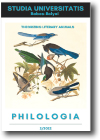AUDIO-VISUAL CULTURE IN TEXTBOOKS OF GERMAN AS A FOREIGN LANGUAGE: A CROSSROADS BETWEEN MEDIA COMPETENCE AND SUBJECT-SPECIFIC OBJECTIVES
AUDIO-VISUAL CULTURE IN TEXTBOOKS OF GERMAN AS A FOREIGN LANGUAGE: A CROSSROADS BETWEEN MEDIA COMPETENCE AND SUBJECT-SPECIFIC OBJECTIVES
Author(s): Michaela Kováčová, Martina MartausováSubject(s): Education, Foreign languages learning, Media studies, Language acquisition
Published by: Studia Universitatis Babes-Bolyai
Keywords: audio-visual literacy; audio-vision; German language; textbooks; foreign language teaching;
Summary/Abstract: Audio-Visual Culture in Textbooks of German as a Foreign Language: A Crossroads Between Media Competence and Subject-Specific Objectives. Audio-visual media have become an intrinsic part of the school curriculum in many countries as a means of complementing teaching and learning processes and ensuring modern and effective teaching in various fields of study, including foreign languages. This study will explore references to audio-visual culture in three internationally available textbook sets for pubescent learners of German as a foreign language: Deutsch.com, Direkt, and Ideen. Audio-vision is used here to refer to audio-visual cultural properties and includes the product and its production, reception, and position within the context of the media culture of the country of origin. Methodologically, the study uses content analysis to examine individual references to audio-vision according to a) the frequency of occurrence at individual levels of language competency, b) the implication of the examined references to audio-visual material with objectives specific to the acquisition of a foreign language (vocabulary, grammar, listening, reading, speaking, intercultural education) and media literacy c) the attention paid to films, genres and other aspects of audio-vision, d) the connection between references to audio-vision and themes and topics discussed in a foreign language, e) the didactic function of the references, and f) their contribution to achieving media literacy goals (audio-visual/film literacy), providing a detailed description of the lessons in each of the studied textbook sets that make use of references to audio-visual material in their curricula.
Journal: Studia Universitatis Babes-Bolyai - Philologia
- Issue Year: 67/2022
- Issue No: 2
- Page Range: 311-328
- Page Count: 18
- Language: English

